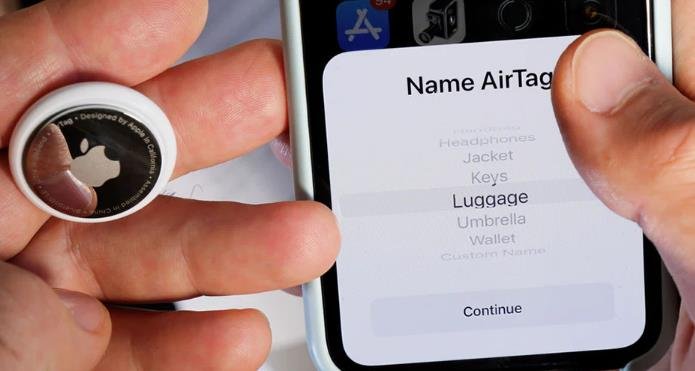Welcome to a comprehensive guide that delves into the world of Apple’s innovative product – AirTags. As technology enthusiasts, we understand the curiosity surrounding this device. It’s not just another gadget; it’s a revolution in the realm of tracking devices. The AirTags, with their compact design and user-friendly interface, have piqued interest worldwide. This write-up will satisfy your curiosity and clarify all your doubts about AirTags, particularly their battery life.
What exactly is the battery life of an AirTag? AirTags are designed with user replaceable CR2032 batteries, eliminating the need for charging. These batteries are not rechargeable and last up to a year or more, depending on usage. This means you won’t be tethered to a charging cable or searching for a power outlet. Isn’t that a relief? By adhering to this guide, you will gain in-depth knowledge about the AirTag’s battery life and how it functions. So, let’s dive deeper into the world of AirTags and unravel their mysteries.
What are AirTags and Their Key Features?
The Apple AirTags are compact, coin-sized devices designed to help locate your belongings using the Find My app on your iPhone. They are built with a minimalist design, featuring a shiny white surface on one side and a metallic panel on the other. Integrated with Bluetooth technology, these tags can be attached to your keys, backpack, or any object you fear losing, and can be tracked using the vast network of Apple devices around the world.
AirTags are equipped with an array of impressive features that make them stand out in the crowded market of tracking devices. For starters, they have an IP67 rating for water and dust resistance, meaning they can survive immersion in up to one meter of water for about 30 minutes. This resilience makes them perfect for outdoor use or in environments where they might be exposed to elements. Furthermore, each AirTag comes with a built-in speaker that plays sounds to help locate it when it’s within Bluetooth range.
According to Apple, AirTags have a user-replaceable CR2032 battery that lasts over a year. This eliminates the need for charging, offering a hassle-free user experience. The device also features Precision Finding, a unique feature available for iPhone 11 and later models, which uses augmented reality, sound, and haptic feedback to guide you to your lost item. In a nutshell, the AirTag is a robust and versatile tracking device that combines Apple’s hardware prowess and vast Find My network to help keep track of your important items.
The Battery Life of AirTags: An Overview
The battery life of AirTags is a refreshing feature that sets it apart from many other devices in the tech market. AirTags are powered by a standard CR2032 coin cell battery, which is user-replaceable and lasts for over a year. This longevity largely depends on how often the Find My network is used and how frequently the device plays sound.
Unlike most wireless devices that require frequent charging, AirTags offer a hassle-free experience with their long-lasting battery life. The beauty of this feature lies in its simplicity. There’s no need for charging cables or power banks; once the battery dies, all you need to do is replace it with a new one. This can be a significant advantage for those who are always on the go and don’t want to worry about another device needing a charge.
To give you an idea of how impressive this is, consider this: the CR2032 battery that powers the AirTag is the same type of battery used in many wristwatches, which are known for their long battery lives. This comparison speaks volumes about the efficiency of AirTags and how they’re designed with user convenience in mind. To sum up, the battery life of AirTags is one of its key features, providing users with a seamless and worry-free tracking experience.
How to Replace the Battery in Your AirTag
One of the most user-friendly features of the Apple AirTag is the ease with which you can replace its battery. Unlike other devices that require professional assistance for battery replacement, with AirTags, you can do it yourself within minutes. This not only saves time but also adds to the overall convenience of using this device.

Do You Need to Charge AirTags?
Here are the steps to replace the battery in your AirTag:
-
Hold the AirTag with the white side facing up towards you: The metallic side is the one that opens up for battery replacement.
-
Press down and twist the metallic side counterclockwise: This action is similar to opening a child-proof medicine bottle. You should feel the cap disengage.
-
Remove the old battery: Once the cap is off, you can easily take out the old CR2032 battery.
-
Insert the new battery: Place the new CR2032 battery into the AirTag with the ‘+’ symbol facing up.
-
Replace the metallic cap: Align the three tabs on the cap with the three slots on the AirTag. Press down and twist clockwise until you hear a click. This indicates that the cap is securely closed.
The process is simple and straightforward, ensuring that even non-tech-savvy users can replace the battery without any hiccups. Remember, the AirTag uses a standard CR2032 battery, which is readily available at most supermarkets or electronics stores. So, you don’t have to worry about finding a specific type of battery for your AirTag.
The Functionality of AirTags without Charging
The Apple AirTag is designed to be a low-maintenance device, and its functionality without the need for charging is a testament to this. The AirTag operates on a user-replaceable CR2032 battery, completely eliminating the need for routine charging. This means you can use your AirTag continuously without worrying about battery life, as long as the battery is functioning.
The AirTag’s primary function is to help locate lost items. It uses Bluetooth technology to connect with nearby Apple devices, which then relay the AirTag’s location to the owner via the Find My app. Even without regular charging, the AirTag is capable of performing this function seamlessly. The device also features an in-built speaker that can play sounds to assist in locating it when within Bluetooth range.
In terms of battery life, according to Apple, the AirTag’s CR2032 battery lasts over a year. This longevity allows for uninterrupted use of the device without the hassle of frequent charging or battery replacements. However, when the battery does finally run out, the user will receive a notification on their connected Apple device, ensuring they are never caught off guard. So, despite not having a rechargeable battery, the AirTag delivers consistent performance and long-lasting functionality.
Pros and Cons of Non-Rechargeable Devices like AirTags
Non-rechargeable devices like AirTags offer a unique set of benefits that differentiate them from typical rechargeable gadgets. However, they also come with a few potential downsides. Understanding these pros and cons can help users make an informed decision about whether these devices are the right fit for their needs.
Pros of Non-Rechargeable Devices like AirTags:
- Long Battery Life: AirTags promise a battery life of over a year, which means you don’t have to worry about charging them every day or even every week.
- No Cables Required: With no need for charging, you can avoid the hassle of carrying around additional cables or finding a power outlet.
- User-friendly Battery Replacement: When the battery does run out, replacing it is a simple process that anyone can do without professional help.
- Consistent Performance: As long as the battery is functioning, AirTags deliver consistent performance with no degradation in tracking precision due to low battery levels.
Cons of Non-Rechargeable Devices like AirTags:
- Cost of Battery Replacement: Although CR2032 batteries are relatively inexpensive, the cost can add up over time, especially for users with multiple AirTags.
- Environmental Impact: Disposable batteries contribute to electronic waste if not properly recycled.
- Availability of Batteries: In some locations, finding the right type of battery may be difficult or inconvenient.
While the convenience and consistent performance offered by non-rechargeable devices like AirTags are appealing, it’s important to consider the potential downsides, such as the ongoing cost and environmental impact of battery replacements. This understanding can help you make the most of your AirTag and other similar devices.
To Wrap Up
The Apple AirTag has redefined the way we keep track of our belongings. Its user-friendly design, long battery life, and seamless integration with the Find My network make it a reliable and convenient accessory for Apple device users. While it may not require charging, it’s important to remember that the battery does need replacing once it runs out – but this process is simple and straightforward, adding to the overall usability of the AirTag.
Despite the minor cost and environmental considerations related to battery replacement, the AirTag’s benefits significantly outweigh its drawbacks. So, whether you’re constantly misplacing your keys or just want peace of mind knowing you can always locate your backpack, the AirTag could be the solution you’ve been waiting for. It’s time to say goodbye to the stress of lost items and embrace this innovative piece of technology.
Frequently Asked Questions
[faq-schema id=”1578″]
















